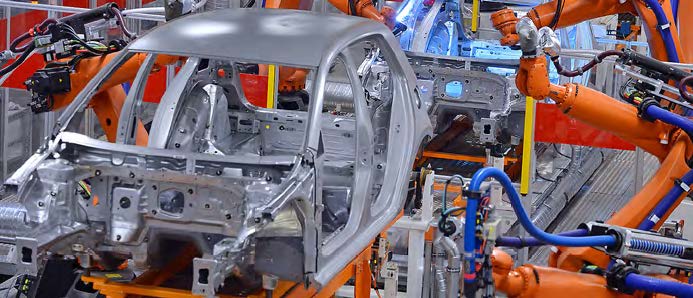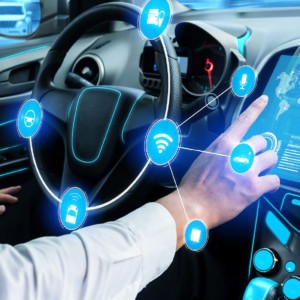Da kink in my back: Exoskeletons making huge impact on automotive manufacturing
With the advancement of exoskeletons as a productivity tool, auto manufacturers are discovering ways to increase productivity while reducing worker injury.
By Carter Hammett
The world of wearable technology has been getting a lot of ink in magazines in recent years. For the uninitiated, “wearables” as they’re known in the biz, include electronic devices worn close to or on the surface of the skin. Wearables can detect and transfer info on everything from vital signs to body movement.
Wearable tech is one example of the “Internet of Things” including software and sensors that enable objects to exchange information through the Internet with a manufacturer or other connected devices minus the need for human interactivity. Wearables can include everything from smart shoes to watches and even tattoos. The technology has been making an impact across multiple sectors including navigation systems and even healthcare.
In recent years even automotive manufacturing has gotten into the act with the introduction of exoskeletons. With an aging workforce and less people entering the trades, automotive companies are looking at different ways to alter productivity.
Exoskeletons are being explored by most of the big players including Toyota, Hyundai and Ford, among others. They’re being perceived as excellent responses to tasks that are repetitive or overheard in nature, or that simply can’t be replaced through automation.
There’s several models currently in development, including several from ULS Robotics. The models enable the wearer to lift an additional 20 kg and are powered by lithium batteries.
Other companies like Hyundai and Toyota are developing exoskeletons that enable workers to perform overhead tasks more effectively. The end result is a safer workplace and a corresponding decline in workplace injuries. Wearable technology has a role to play in reducing these costs. As of March 2019 it was estimated that between the six major car companies, approximately 585 exoskeletons were currently in use.
Another variable contributing to the growth of this wearable technology is the fact that ergonomist and manufacturing engineers from competing companies have the ability to communicate with each other. As a result, stakeholders can swap stories and innovations together which ultimately has the outcome of benefiting workers around the globe.
Production lines are known for having short cycle times, meaning that a new vehicle is completed every three-to-six minutes. Workers may rotate tasks every two hours, but they’ll still have a lot of repetition and the same body motions on a daily basis.
Ultimately, the motive industry wants to reduce the number of long-term injuries. Injuries aren’t usually isolated events. Rather, the body accumulates fatigue over the course of time until one day when the injury actually happens. Fatigue buildup occurs when the body hasn’t had sufficient time to recover from the daily grind that it requires.
At a recent webinar co-presented by Toyota and the University of Waterloo June 2, presenters quoted McFarland and Fischer (2019) who wrote, “researching the impact of industrial-use exoskeletons on muscular fatigue and kinematics of the shoulder will continue to provide a more robust appraisal of their efficacy to reduce shoulder-related specific muscle demands.”
Researchers identified several factors that potentially increase risk of injury in overhead work, including extended reaches, high frequency of arm elevation, high precision requirements and the arm being forced to rotate internally. Here, the shoulder is identified as a “complex” rather than a “joint” which faces a range of complex issues that involve multiple parts, including muscles which can increase perturbation and contribute to injury.
As of this writing there are three passive (unpowered) exoskeletons being utilized and developed, including shoulder support units that support the arms at or above chest level; hip exoskeletons that provide back support while the user is bending and “chairless chairs” that can lock into position while squatting. A 2019 study published in the Professional Safety Journal of the American Society of Safety Professionals, indicated an 86% improvement of high quality welds for workers wearing am exoskeleton that provided passive shoulder support during a welding simulation.
At present, Hyundai is piloting exoskeletons in Korea and plans an eventual global disbursement, hopefully selling them to other auto manufacturers. The goal is to help with the company’s transition to autonomous and electric vehicles. The company recently announced that $17billion will be spent of new technology to aid with the transfer.
That’s serious investment. And a sign that wearable technology is here to stay. Despite recent advancements in automation, vehicle manufacturers still require human input in areas like decision making that robots simply can’t duplicate. In tandem with exoskeletons, auto plant workers will be able to extend their productivity while reducing their likelihood of injury as we enter a new era of manufacturing.


